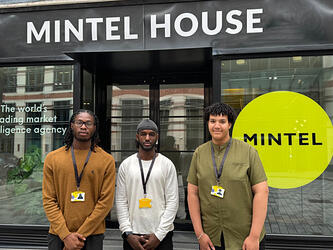Perceiving emotional efficiency
Here’s a very simple question. Imagine you are at a board meeting where a group of people put forward a tightly costed, well-argued proposal for the design of a new railway station. Everything within the proposal makes perfect economic sense; the throughput of passengers will be efficient and retail rent high, and there will be an array of ticket barriers to prevent fare evasion.
Now, imagine raising your hand with the following objection: ‘I like your proposals on paper, but I can’t help feeling the station you propose lacks brand resonance’? Or, more specifically, ‘Yes, all well and good, but where’s the champagne bar?’ It’s likely that you would be treated like a complete idiot. In business – and more so in government – collective decision-making has become an exercise in the display of pure rationality.
This is a problem. It is a problem because we, as humans, do not really care about the things that rational people think we should care about.
The reason is simple – we have not evolved to perceive the world objectively. Our sensory and emotional apparatus has been calibrated to detect and react to things according to their importance to evolutionary fitness, not their measurable qualities. We are, for instance, disproportionately attuned to detect faces in things – even inanimate objects – because, in evolutionary terms, things with faces are usually more important to our survival or reproductive prospects than things without eyes, noses and mouths.
We are ineluctably wired to respond to oblique inference, meaning and significance, rather than to objective metrics.
So, it is possible to produce something that, in objective terms, is a significant improvement and find that people don’t give a damn. It is also possible to make rather trivial changes around a product or experience and find that people’s emotional state is transformed.
A television emits three primary colours – red, green and blue; these are the only colours to which human vision is sensitised. Televisions don’t produce ultraviolet and infrared light because humans cannot detect them; and they don’t produce yellow photons because the impression of yellow can be created more efficiently by firing equal quantities of green and red light.
When we design something for human experience, we should focus our efforts in the realms of perception to which humans are emotionally attuned, and improve emotional resonance over quantifiable objective properties.
Take that railway station example. When St Pancras was reopened, after a long refurbishment, to cater for new high-speed and Eurostar trains, the press release contained the detail that it now contained ‘the longest champagne bar in Europe’. This bizarre fact seemed to resonate with journalists, who all faithfully reported the news.
Now, if you were to ask for a long champagne bar in that board meeting, you would look like a trivial idiot. In collective decision-making, even mentioning subjective factors would expose one to the risk of ridicule.
Any rational person would suggest that ‘the longest champagne bar in Europe’ was a fairly crappy superlative. Generally, people don’t care how long champagne bars are – but, to human perception, that sentence was a burst of pure green light. In one sentence, it conveyed that this station was not a mere utilitarian transit hub – it was a place of entertainment, and a destination in its own right.
How would you sell such an idea to a meeting obsessed with throughput and fare evasion?
What if we borrowed the language of our reductionist, rationalist colleagues and, instead of saying, ‘the station lacks a brand differentiator’, we said ‘how can we make the station more emotionally efficient?’ I Googled it, and the phrase is almost unused. Yet the borrowing of the word ‘efficient’ will force our colleagues to take note in a way that marketing language never will. Or what if we were to reference Kano theory, and explain that every successful product needs to possess something that goes beyond functionality?
This, to me, has always been the second most exciting aspect of behavioural science, after the science itself. It gives us a vocabulary that might bridge the gap with finance, rather than widening it into a chasm.

We hope you enjoyed this article.
Research Live is published by MRS.
The Market Research Society (MRS) exists to promote and protect the research sector, showcasing how research delivers impact for businesses and government.
Members of MRS enjoy many benefits including tailoured policy guidance, discounts on training and conferences, and access to member-only content.
For example, there's an archive of winning case studies from over a decade of MRS Awards.
Find out more about the benefits of joining MRS here.












0 Comments